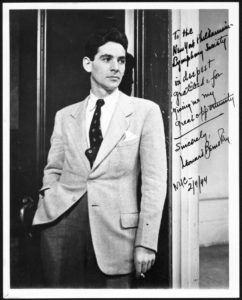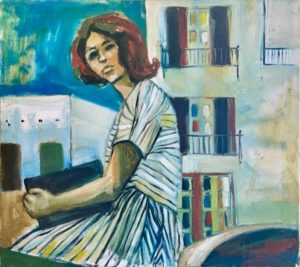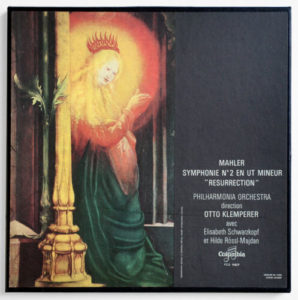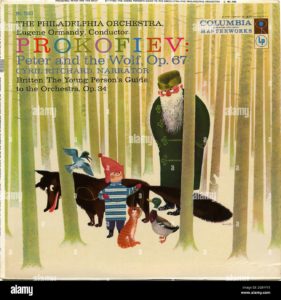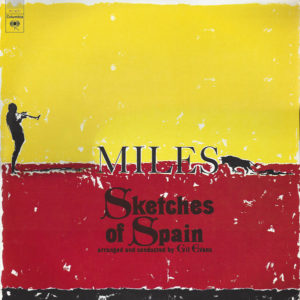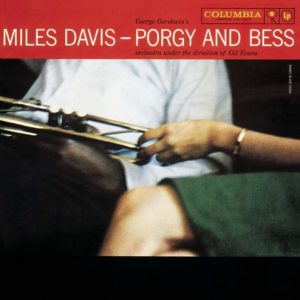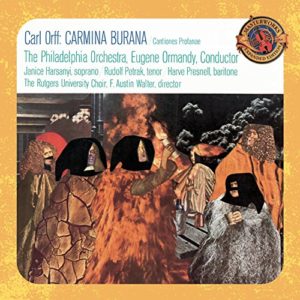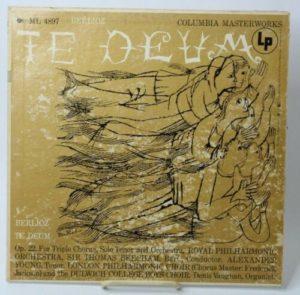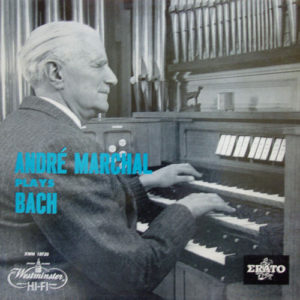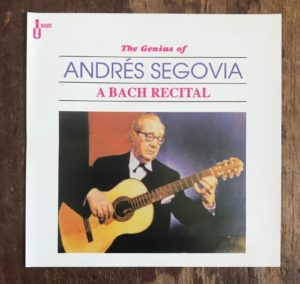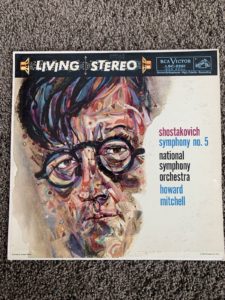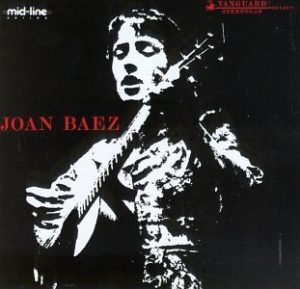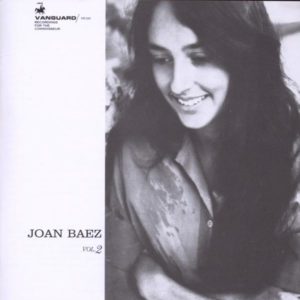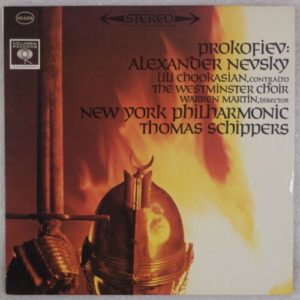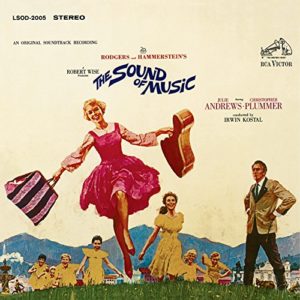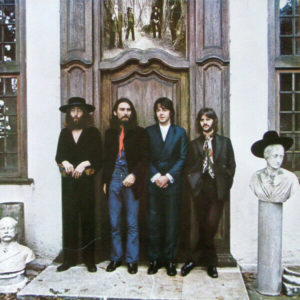Songs My Mother Taught Me
On Sunday, November 14, 1943, something remarkable happened. The 25-year-old Leonard Bernstein stepped in, at the last minute, to fill in for Bruno Walter and conduct the New York Philharmonic. Leonard Bernstein’s New York Philharmonic conducting debut had a profound impact on music. The door was opened for Bernstein’s legacy to be planted as a great conductor, educator, and composer. Personally, Sunday, November 14, 1943 has an indelible meaning for me because it is the exact date of my mother, Sharon’s birth.
My mother, whom I named “Mamita,” grew up listening to classical, jazz, and popular music that her parents enjoyed. Her mother Hazel exposed my mother and her baby brother Michael to classical music by taking them to Monday night concerts at the Corpus Christi Symphony. My mother, who took ten years of piano lessons, was a proficient enough piano student, but she said her nerves were so bad that her fingers slipped off the keys when she performed in front of people. In the end, my mother’s nerves got the better of her.
At the University of Texas my mother was an art history major, and she even thought about studying music composition. It was at the University of Texas at Austin in the 1960’s where her love of music really developed. She realized her love for the pipe organ, Bach and Shostakovich. In her last year at the University, my mother studied in Mexico City which was steeped in classical music. Mamita matter-of-factly told me stories of having often attended concerts conducted by the Mexican composer and teacher Carlos Chavez.
After finishing her master’s degree in Art History, my mother married my father and moved to Mexico. By that time, my mother had amassed a hefty collection of LPs she’d collected at the university. I believe that the music my mother exposed me to from her university years shaped and influenced me as a person and as a music lover. In my opinion, Mamita also had something to do with my brother Tomás’s interest in music as he went on to study composition and classical guitar at the University of Texas at Austin. As young children we were raised without television but surrounded by music. When my father was home, it was country music that we heard. (My father’s interest in country music might be a blog for another time.) However, when my mother was left to her own devices, there was an eclectic stream of music that was a major part of the soundtrack of my early childhood. This is a small tribute to the smattering of music and recordings I remember my mother playing and sometimes singing along with.
I know this is kind of a heavy-hitter to start with, but it is so sentimental to me. Mamita did not speak German, but she knew all of the words to Mahler’s Symphony No. 2 “Resurrection.” What I remember about this recording is my mother singing along to it and how majestic Mary looks in this image.
Prokofiev’s Peter and the Wolf and Britten’s The Young Person’s Guide to the Orchestra to this day conjure up the scent memory of pancakes and cream of wheat, probably because Mamita played this LP in the morning at breakfast time. It sounded a little old-fashioned, but Cyril Ritchard, the narrator and Peter’s grandfather, sounded uncannily like my own grandfather! My favorite line was, “If a wolf should come out of the forest, then what would you do?” Mamita always reassured me that at the end of Peter and the Wolf, the wolf was taken to a special wolf sanctuary where it would be treated kindly and given lots of treats.
Before ever hearing Joaquín Rodrigo’s Concierto de Aranjuez for guitar and orchestra, I got to know it in this brilliant arrangement by Gil Evans and iconic performance by Miles Davis.
Speaking of iconic and brilliant! My mother always maintained she didn’t like jazz, however, Porgy and Bess and Sketches of Spain, à la Miles Davis and Gil Evans were uncategorizable to her.
Even though the subject matter of Carl Orff’s Carmina Burana might get a PG13 or R rating, Mamita handled it all with aplomb and nonchalance around her overimaginative, impressionable young daughter. She told me that everything was fine and that people were having fun and dancing. I was drawn to the rhythm of the music and the strange images on the LP. (And yet another performance by Eugene Ormandy and the Philadelphia Orchestra!) It also features baritone and actor Harve Presnell who sang in the movie and Broadway musical, “The Unsinkable Molly Brown.” He also starred as the cantankerous father-in-law in “Fargo.”
This LP jacket is even more familiar to me than the music inside. I wondered if these creatures were angels or fish? I also remember that the music was big! Berlioz’s Te Deum is monumental in that the organ is required to be on equal footing with the orchestra, and is it ever!
Mamita adored Johann Sebastian Bach on any instrument including organ and guitar. She had a few recordings of André Marchal who was in some ways the French Helmut Walcha or Virgil Fox for his championship of the pipe organ in the 20th century. My mother had many recordings by the legendary guitarist Andrés Segovia, but her favorites were the ones of him playing Bach.
I was not able to find the exact recording that Mamita had of her favorite symphony, the Symphony No. 5 by Dmitri Shostakovich. The jacket had abstract, Kandinsky-like artwork on it, as I remember. My mother discovered Shostakovich’s music in college. She appreciated the journey through the music, but it was the powerful, enormous ending which made it her favorite symphony.
This iconic triumvirate of early Joan Baez recordings was a listening staple for my mother. Joan Baez grew on me big-time as a teenager. But, as a child, I couldn’t understand the content of the songs. I found many of them to sound strange and sad with people transforming into seals, and grizzly English ballads where ill-fated lovers meet their end. 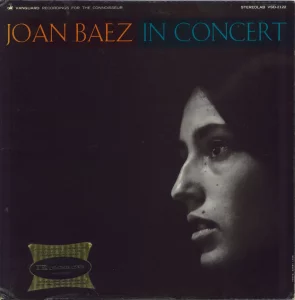
Often, I got to choose what music I wanted us to listen to, except for this recording. Prokofiev’s Alexander Nevsky was a big NOPE! Apparently the music had frightened me as a toddler, and Mamita never gave in no matter how many times I asked. It wasn’t until I got into radio that I heard Prokofiev’s film score and cantata Alexander Nevsky. There is a choral part in the Battle on Ice that makes me jump every time I hear it. Maybe Mamita was right!
Probably the antithesis of Alexander Nevsky is The Sound of Music. Typically, The Sound of Music would not have been one of Mamita’s favorite things. But as a 5 or 6 year old, I loved it! I spent a lot of time listening to the music and staring at the LP jacket imagining myself on the mountain singing with all those smiling children.
My mother often recounted a story about being home with her parents during a college vacation break in 1964. My mother and her father were watching The Ed Sullivan Show when a group of four young men from the UK came on stage to perform live. Mamita always laughed about how her father rolled his eyes, and with great confidence said, “This is a fad that will be gone tomorrow.” Mamita’s favorite Beatles song was “Hey Jude.” They were also her favorite band before she discovered Pink Floyd years later. 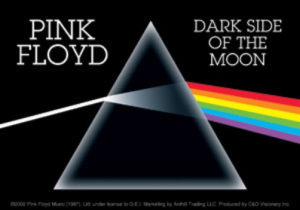
My mother taught Special Ed for many years. When she lived in Texas, Mamita worked with younger children who had special needs. Every day for her class, she turned on the local public radio station where I was the midday classical music host. On one occasion, after hearing a portion of Franz Schubert’s Octet on the radio, my mother went around the room and asked her students to describe what they thought and how they felt about the music. One little boy smiled and said he saw people dancing.
I am often asked how children can be introduced to classical music, or how they can get better exposure to the music. Based on my own experience, a good first step might be to just play classical music for them. There are any number of ways to present classical music to the little ones. We have an abundance of recordings and other sources for classical music, especially on the radio like WBJC!

